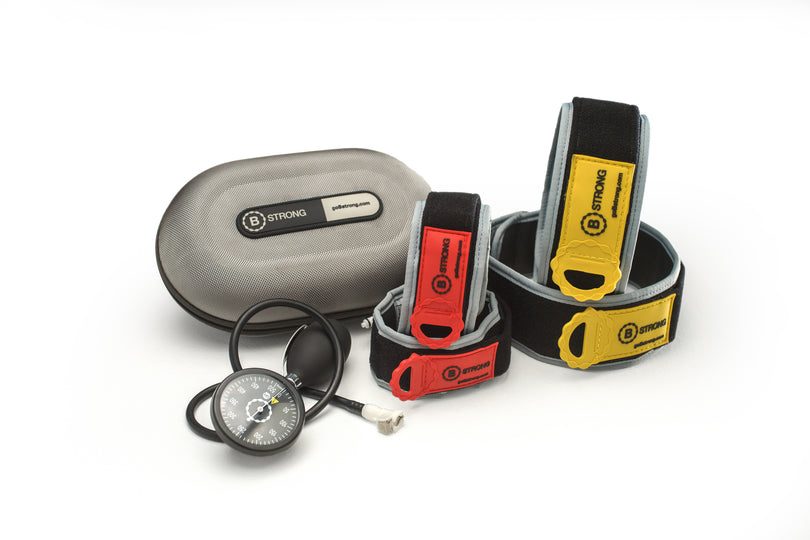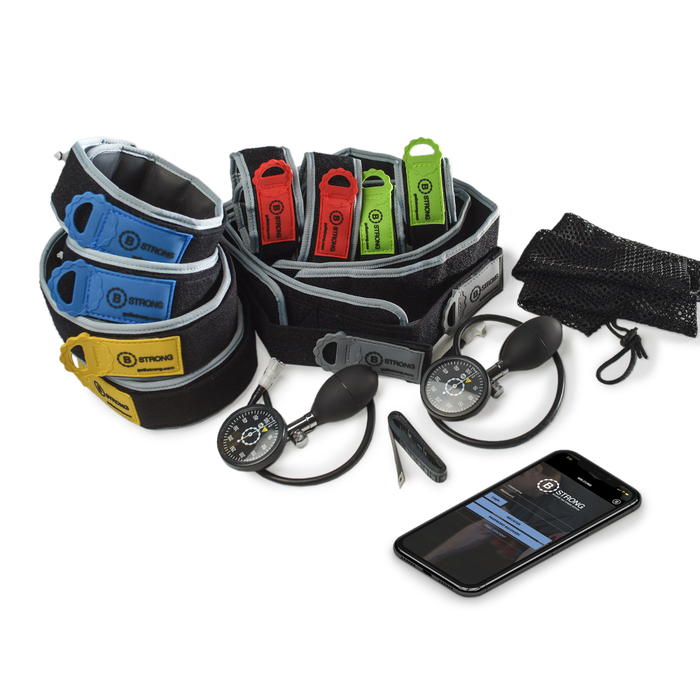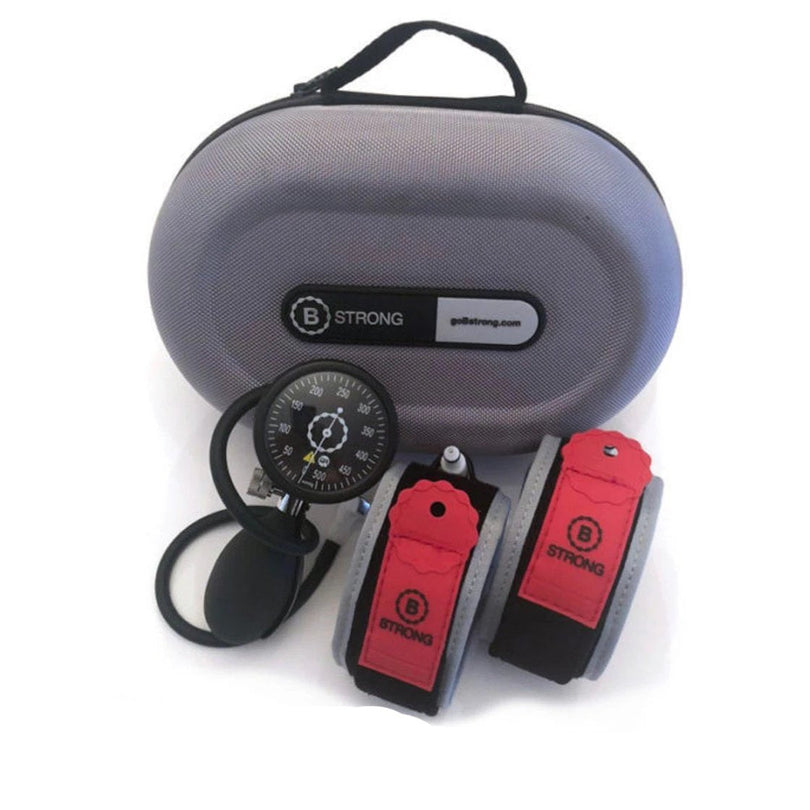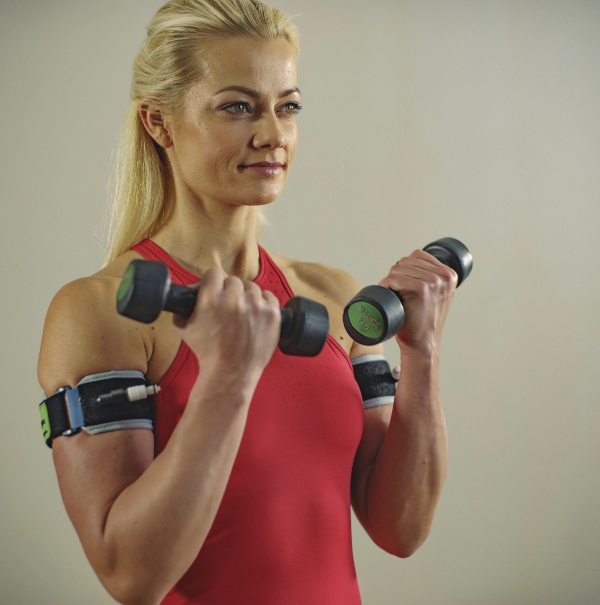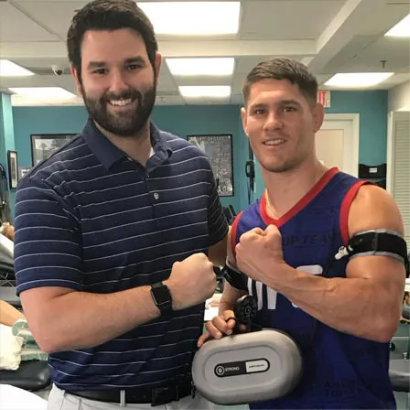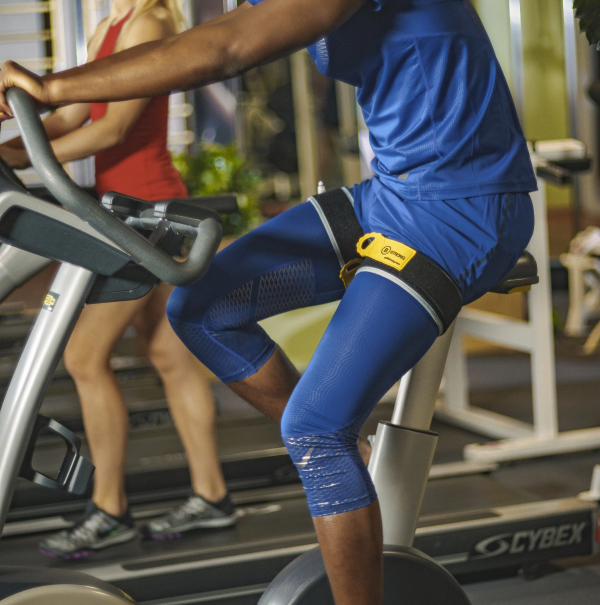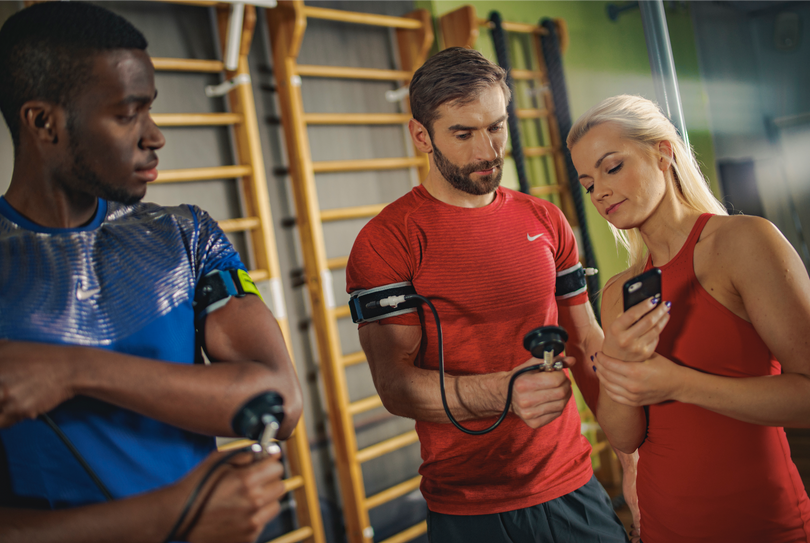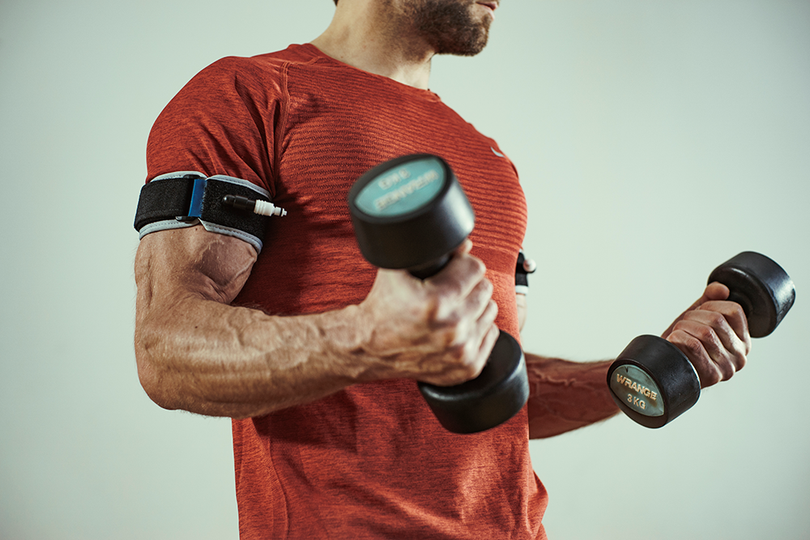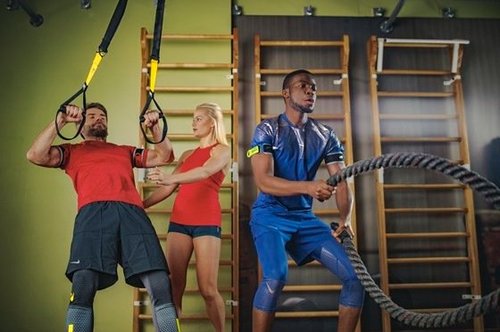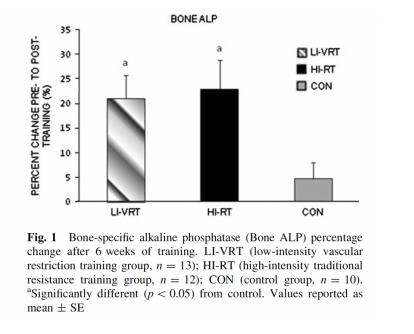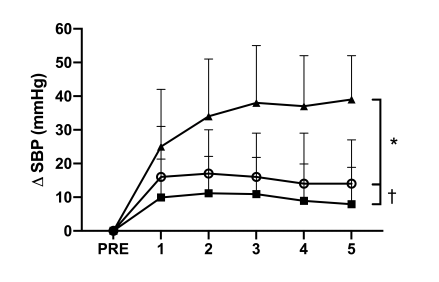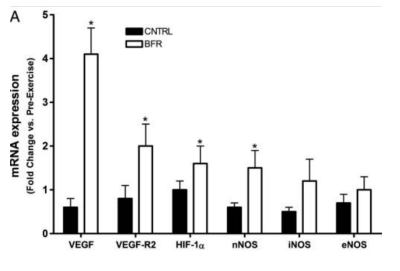BFR increases markers of bone turnover just as much as traditional high-load exercise.
Karabulut et al. 2011
• This study compared the effects of BFR and traditional high-load exercise on markers of bone turnover.
• Typically, it is thought that one needs high mechanical loading to induce bone turnover and growth.
• 37 older men (>50 years old) were separated into 3 groups, and each performed 6 weeks of training 3 times per week.
• One group performed low-load exercise with BFR (LI-VRT), another group performed high-load exercise (HI-RT) without BFR, and one group did not perform any exercise.
• Both the HI-RT group and LI-VRT group performed the same upper body exercises (lat pull down, shoulder press, and biceps curl) for 3 sets of 8 repetitions at 80% 1-RM.
• The HI-RT group performed two lower body exercises (leg press and knee extension) for 3 sets of 8 repetitions at 80% 1-RM, but the LI-VRT group performed these lower body exercises with BFR for 1 set of 30 repetitions, followed by 2 sets of 15 repetitions at 20% 1-RM.
• The results revealed a significant increase in markers of bone turnover and formation in both groups.
• Take-away: low-load resistance training with BFR can be as effective as traditional high-load resistance training to improve bone health.


